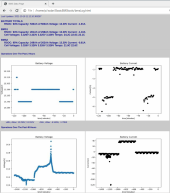dreuge
New Member
- Joined
- Jan 18, 2021
- Messages
- 12
What would be wrong with adding a 2nd BMS in parallel on the same battery to increase the max allowable current? I do not see any show stoppers, in fact I see it as a better option than what some do by building to separate 4S batteries. For example with 16 8 cells, one 2P4S w/ 2 parallel BMS's vs two 4S batteries each with its own BMS.
Last edited:



